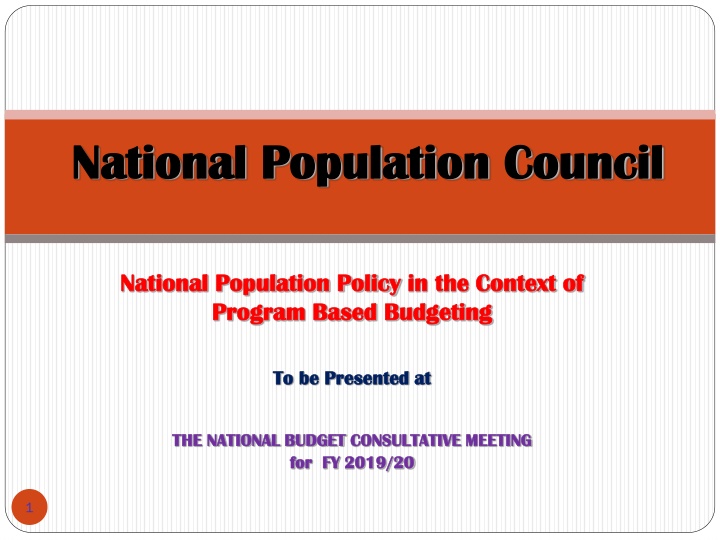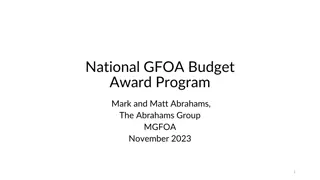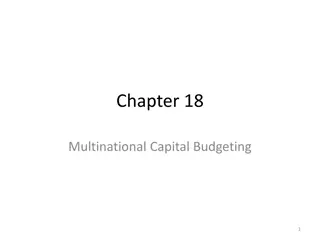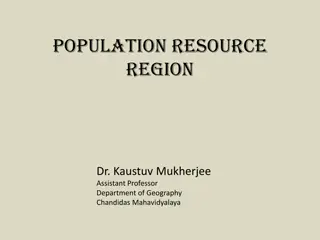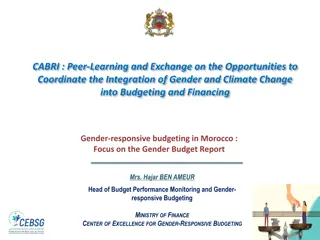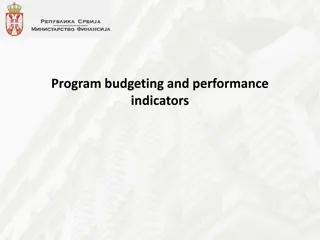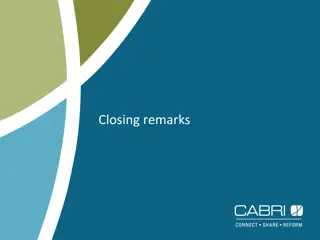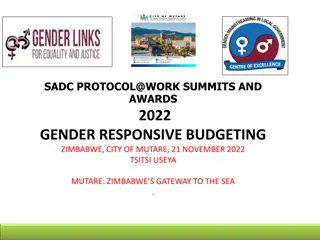National Population Policy in the Context of Program Based Budgeting
National Population Policy aims to accelerate fertility and mortality decline for a favorable age structure and transform Uganda's youthful population into a competitive advantage. Implementation includes an Action Plan to deliver the Human Capital Development Pillar within the framework of NDP II. A multi-sectoral approach with emphasis on Program Based Budgeting is adopted to integrate population factors and promote ownership and accountability without needing additional funds. An advocacy and communication strategy is in place to enhance understanding of population and development inter-linkages at all levels to drive behavior change and collaboration.
Download Presentation

Please find below an Image/Link to download the presentation.
The content on the website is provided AS IS for your information and personal use only. It may not be sold, licensed, or shared on other websites without obtaining consent from the author.If you encounter any issues during the download, it is possible that the publisher has removed the file from their server.
You are allowed to download the files provided on this website for personal or commercial use, subject to the condition that they are used lawfully. All files are the property of their respective owners.
The content on the website is provided AS IS for your information and personal use only. It may not be sold, licensed, or shared on other websites without obtaining consent from the author.
E N D
Presentation Transcript
National Population Council National Population Council National Population Policy National Population Policy in the Context of Program Based Budgeting Program Based Budgeting in the Context of To be Presented at To be Presented at THE THE NATIONAL BUDGET NATIONAL BUDGET CONSULTATIVE f for FY or FY 2019/20 CONSULTATIVE MEETING 2019/20 MEETING 1
National Population Policy in the Context of National Population Policy in the Context of Program Based Budgeting Program Based Budgeting Main Main Thrust Thrust of of the Accelerating fertility and mortality decline for a more favourable population age structure and transforming Uganda s youthful population into a competitive advantage for development. To implement the NPP, 2018; the National Population Policy Action Plan (NPPAP II) is developed to operationalize the policy. The main focus in of the NPPAP II will be to deliver the Human Capital Development Pillar within in the framework of NDP II. The life cycle approach will be adopted which comprises of six stages including: pregnancy, early childhood (0-5 years), late childhood and early adolescents (0-12 years), adolescents (13-17 years), young adulthood (18-24 years) and adulthood (25-65 years). the 2018 2018 National National Population Population Policy Policy (NPP, (NPP, 2018 2018) ): : 2
National Population Policy in the Context of Program Based National Population Policy in the Context of Program Based Budgeting Budgeting Context Context Increasing population 16.7m in 1991 and 34.6m (2014 Census) and projected to reach 100m in 2050. Shifted to a population-influencing approach A multi-sectoral approach with emphasis on Programme Based Budgeting System (PBS) will be adopted to ensure integration and mainstreaming of population factors and to promote ownership, participation and accountability. No additional funds/new monies are required. 3
National Population Policy in the Context of Program Based National Population Policy in the Context of Program Based Budgeting Budgeting A robust advocacy and communication strategy to contribute to improved understanding of population and development inter-linkages at all levels to ensure behaviour change of the people and collaboration amongst partners in both public and private sector including the media. 4
Thank you for your kind attention 5
